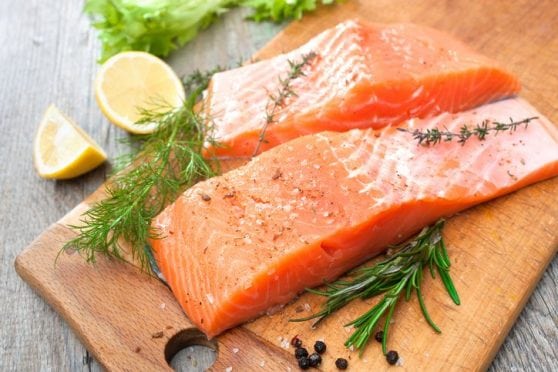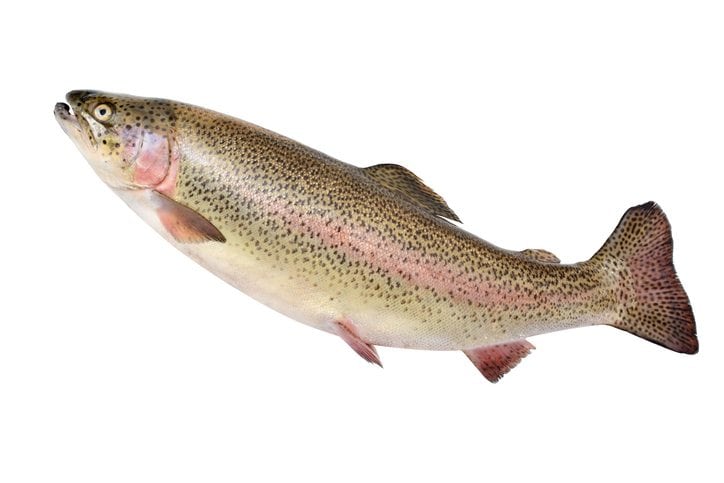Fish lovers must balance the health benefits of seafood rich in omega-3s with the risks of ingesting dangerous amounts of mercury, which can cause neurological disease and, in extreme cases, death.
A safe amount of mercury, according to the U.S. Environmental Protection Agency, is no more than 0.1 micrograms a day for each kilogram of body weight. For the average adult woman — 166.2 pounds, according to the Centers for Disease Control and Prevention, about the same as a 1960s-era male — that’s 7.5 micrograms a day. For the average adult male (195.5 pounds), it’s 8.8 micrograms a day.
A can of albacore tuna contains 40 micrograms of mercury.
Two years ago, the U.S. Food and Drug Administration and Environmental Protection Agency advised pregnant women, those who may become pregnant, breastfeeding mothers and young children to eat more fish. In its cautions about fish higher in mercury, it listed four to avoid: tilefish from the Gulf of Mexico, shark, swordfish and king mackerel, while advising no more than 6 ounces of tuna a week.
A report released earlier this year by the Environmental Working Group, however, warned that fish on the FDA/EPA’s “safe” list was responsible for most of the mercury in tests of 254 women of childbearing age from 40 states. Only 17 percent of the women’s mercury levels was traced to fish on he “avoid” list. Favorites such as tuna steak and tuna sushi were cited as likely sources of safe-list mercury.
Use the list below to choose fish with highest omega-3 and lowest mercury levels. Of readily available fish, salmon, shrimp, pollock, tuna (light, canned), tilapia, catfish and cod are considered the safest.
When catching fish in our lakes, rivers and Long Island Sound, pay attention to state advisories. The state Department of Public Health says most freshwater fish in Connecticut contain enough mercury to recommend limiting consumption. High-risk groups — pregnant woman, a woman planning pregnancy within a year, a nursing mother or a child under 6 — should eat these fish no more than once a month. Low-risk groups are advised to include locally caught fish in no more than one meal per week.
Fish caught in the Housatonic River, part of the Quinnipiac River, some lakes and species from Long Island Sound contain higher levels of contaminants.
Don’t blame the fish. Our waterways still contain mercury and polychlorinated biphenyls (PCBs), dumped directly into the water for decades by factories and other businesses.

What’s In Your Fish?
First Number (good): milligrams of omega-3 fatty acids (Eicosapentaenoic (EPA) and Docosahexaenoic (DHA) per 4 ounces of cooked fish.
Second number (bad): micrograms of mercury per 4 ounces of cooked fish.
- Salmon (Atlantic, Chinook, Coho): 1,200-2,400/2
- Salmon (Pink & Sockeye): 700- 900/2
- Anchovies, Herring, and Shad: 2,300-2,400/5-10
- Mackerel: Atlantic & Pacific (not King): 1,350-2,100/8-13
- Tuna: Bluefin & Albacore: 1,700/54-58
- Sardines (Atlantic & Pacific): 1,100-1,600/2
- Oysters (Pacific): 1,550/2
- Trout (Freshwater): 1,000 -1,100/11
- Tuna (White Albacore, canned): 1,000/40
- Mussels (Blue): 900/NA*
- Squid: 750/11
- Pollock (Atlantic & Walleye): 600/6
- Marlin: 250-1030**/69
- Crab (Blue, King, Snow, Queen, & Dungeness) 200-550/9
- Tuna (Skipjack & Yellowfin): 150-350/31-49
- Flounder, Plaice & Sole (Flatfish): 350/7
- Clams: 200-300/ less than 1
- Tuna (Light canned): 150-300/13
- Catfish: 100 -250/7
- Cod (Atlantic & Pacific): 200/14
- Scallops (Bay & Sea): 200/8
- Haddock & Hake: 200/2-5
- Lobster (American): 200/47
- Crayfish: 200/5
- Tilapia: 150/ 2
- Shrimp: 100/ less than 1
- Orange Roughy: 42/80
Varieties That Should Not be Consumed by Women Who Are Pregnant or Breastfeeding or by Young Children:
- Shark: 1,250/151
- Tilefish (Gulf of Mexico): 1,000/219
- Swordfish: 1,000/147
- Mackerel (King): 450/110
*Not available. It is likely to be comparable to the levels in oysters and clams.
**250 is the value for blue marlin and 1030 is the value for striped marlin.
Note: If you eat fish that contains mercury, your body will absorb the mercury. Eventually, your body expels it in urine, feces and breast milk. But mercury, at high levels, can be harmful. If you have questions, check with your primary provider. If you need a primary provider, visit myhhcdocs.org or call 1.855.HHC.HERE (1.855.442.4373).

